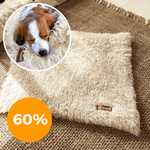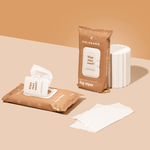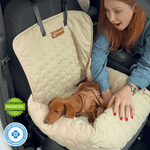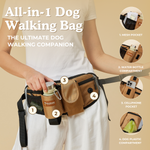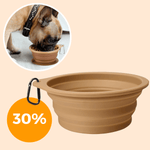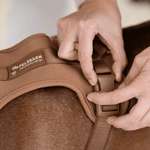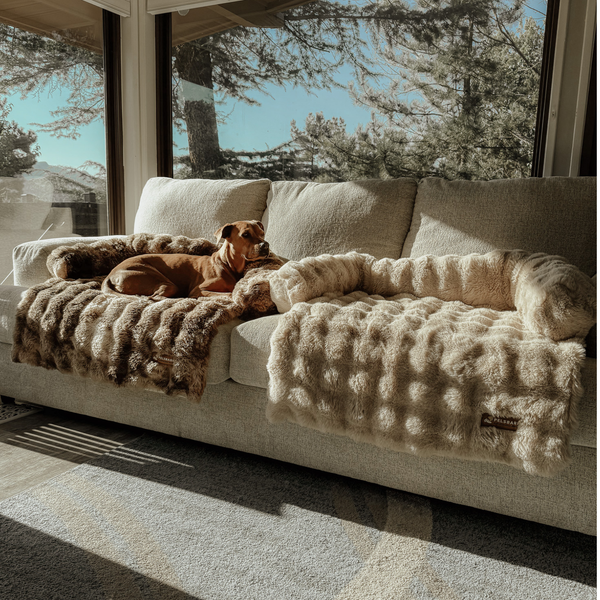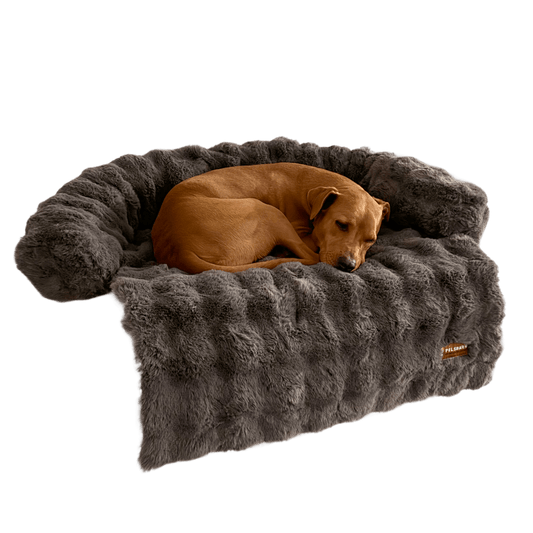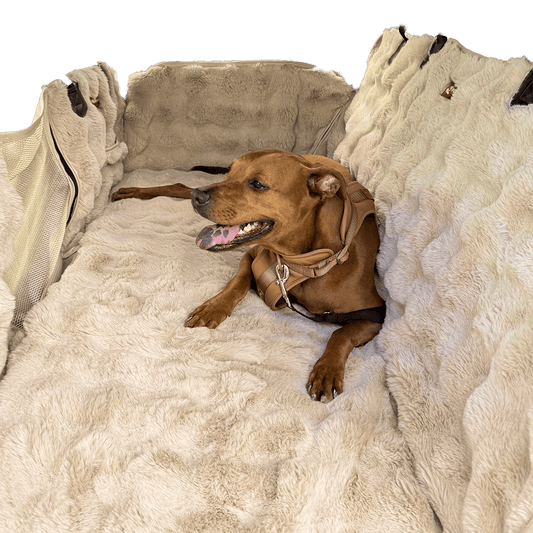Bringing home a rescue dog is one of the most rewarding experiences you can have. You're not just getting a pet. You’re offering a dog a second chance at love, safety, and belonging. But just like welcoming any new family member, it takes preparation to make sure your home feels safe, cozy, and stress-free.
Here’s your step-by-step guide to preparing for that exciting day when you finally get to take your dog to their new home.

1. Create a Safe Space
When your rescue dog first arrives, they may feel nervous or overwhelmed. Imagine being suddenly dropped into a brand-new environment: you’d want a quiet corner to breathe as well.
Set up a dedicated space in your home where your pup can retreat and feel secure. This could be a spare room, a cozy nook, or even a crate draped with a blanket to create a den-like atmosphere. Place a comfortable dog bed, soft blanket, and a bowl of fresh water in this area so they have everything they need within reach. Let your dog explore the rest of the house at their own pace once they feel ready.
Having a safe space helps them decompress and teaches them that your home is a place where they’re protected and loved.
2. Set Aside Time to Be Home Together
The first few days after adoption are crucial for helping your dog feel secure. Imagine how overwhelming it must be to leave the shelter, meet new people, travel in a car, and then suddenly land in a completely unfamiliar environment. Having you nearby during this transition makes all the difference.
If possible, plan to take a few days off work so you can spend uninterrupted time at home. This doesn’t mean constant interaction. Sometimes, the best thing you can do is simply be present. Sit nearby, let them nap, and reassure them with your calm presence. Your availability helps them understand that this new life comes with stability, safety, and companionship.
Can’t take time off? Try bringing your new pup home on a Friday or just before a long weekend. Dedicate those first days to quiet bonding: gentle walks, feeding routines, and calm downtime together. The goal is to create a foundation of trust before introducing too much stimulation or leaving them alone for long stretches.
Those first days are about sending one clear message: you’re home now, and you’re not alone.
3. Dog-Proof Your Home
All dogs come with their own personalities. You might not yet know if they’re chewers, explorers, or escape artists. To set them up for success, dog-proofing is essential. Think of it like baby-proofing, but for paws and curious noses.
Start by removing or relocating toxic plants such as lilies, aloe, and philodendrons, which can be harmful if ingested.
Secure cleaning products, human foods, and medications in cabinets or on high shelves.
Hide or cover exposed wires and cords to prevent chewing accidents.
Outdoors, check your fences, windows, and doors for potential escape routes. Remember, a frightened dog may attempt to flee.
By creating a hazard-free environment, you minimize risks and allow your dog to safely adjust without unnecessary stress.
4. Stock Up on Essentials 🛒
Before your rescue sets paw in your home, it’s important to have all the basics ready. Start with a sturdy food and water bowl (stainless steel or ceramic is best, since they’re durable and hygienic).
Choose high-quality dog food, ideally the same brand or formula your dog has been eating at the shelter; this consistency will ease the transition and reduce stomach upset.
Make sure you have a properly fitted collar, a secure harness, and an ID tag with your contact details. A standard 4–6 ft leash is safest for initial walks, giving you control while your pup learns the ropes.
For comfort and training, provide a cozy bed or crate where they can rest. Don’t forget toys and chews, these not only relieve stress but also provide mental stimulation and prevent boredom. And yes, stock up on cleaning supplies; you’ll thank yourself when accidents happen (they often do in those first weeks).
Having everything on hand shows your new dog that their needs matter to you from day one.
5. Establish a Routine
Dogs thrive on predictability, and for rescues, routine is a powerful source of security. Set consistent times for meals, potty breaks, walks, and bedtime. At first, keep things calm and structured. Avoid too many new experiences all at once. For example, feed them in the same spot each day, walk them at similar times, and stick to a bedtime ritual such as a final potty break followed by quiet cuddle time. Why does this matter? Predictability reassures them that they can trust you and their new life. Over time, this structure helps them relax, settle in, and blossom into their true personality.
6. Plan for Vet Care
A vet visit should be one of your first priorities after adoption, ideally within the first week. Bring any medical records the shelter provides so your vet has a clear starting point. At this appointment, you’ll want to confirm that your dog is up to date on vaccinations, discuss flea, tick, and heartworm prevention, and ask about spaying/neutering if it hasn’t already been done. It’s also a good moment to check whether your dog is microchipped and, if so, update the registration with your contact details. Establishing vet care early ensures that your pup starts their new life with a clean bill of health and gives you peace of mind knowing you’re prepared for emergencies.
7. Family Meeting: Set Boundaries & Rules
Welcoming a dog is a family decision, and consistency is key to helping your rescue adjust. Before your pup comes home, sit down as a family and set clear rules and responsibilities. Decide where the dog is and isn’t allowed: are they welcome on the sofa or beds, or will you keep certain spaces dog-free?
Assign roles for feeding, walking, and training so that everyone knows their part. If you have children, teach them how to gently approach and interact with the dog, reminding them not to overwhelm or crowd a nervous pup. Establishing rules from the beginning helps avoid confusion for both your family and your dog, creating a stable environment where your new companion can thrive.
8. Take a Walk Before Arriving Home
Before stepping into the house for the very first time, take your new dog for a nice long walk. This burns off nervous energy and sets the stage for a calmer introduction to their new environment. On the walk, they can release stress, get some exercise, and take care of bathroom needs so you won’t have to worry about accidents the moment you step inside.
Taking a long walk and arriving a little tired also helps them to see their new home as a place to rest. This way, your rescue is more likely to see your home as a safe den where they can settle down and recharge. Plus, the shared walk gives you both a head start on bonding: your dog begins to learn that you’re their new companion in exploration and safety.
9. Patience Is Key
Perhaps the most important step of all: patience. All dogs respond differently to new environments. They might feel fear, excitement, anxiety, or all three at once. Some may hide and withdraw, while others may test boundaries or seem overly energetic.
Give them time to adjust at their own pace. Celebrate the small milestones, whether it’s the first time they wag their tail, respond to their name, or master “sit.” Many adopters refer to the “3-3-3 rule”: it often takes 3 days for a dog to start decompressing, 3 weeks to begin learning the routine, and 3 months to fully feel at home. Knowing this timeline helps set realistic expectations and keeps frustration at bay. With love, consistency, and patience, your rescue will soon realize they’ve finally found their forever family

Why Preparation Matters
By preparing your home before adoption, you set your rescue dog up for success. Every blanket you place, every boundary you set, and every routine you create tells your dog, “You are safe here. You belong here.” And that’s what rescue is all about: giving a dog not just a house, but a second chance at love, safety, and belonging. A home.
We believe every dog deserves that kind of home. We wish you and your new companion an abundant amount of love and joyful adventures together.
All the best,
Elle from Pelsbarn
